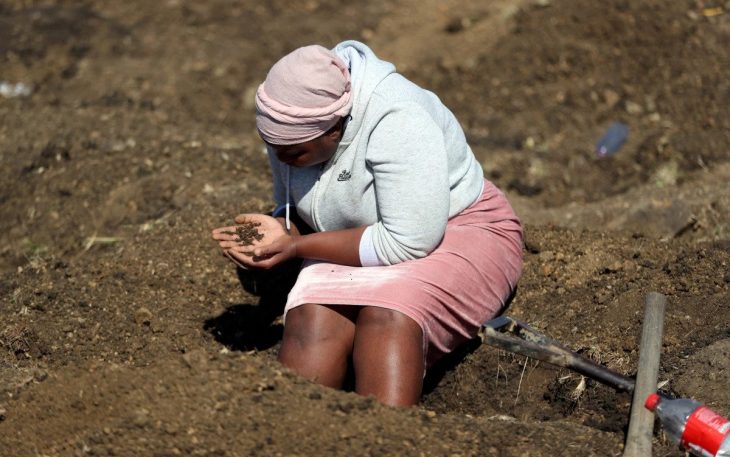Over 3,000 people flocked to a remote village of KwaHlathi in South Africa recently after word spread that a herder had discovered a ‘diamond’ in the area.
However, officials said over the weekend that those unidentified stones that lured thousands of fortune seekers were not diamonds but quartz crystals with relatively low value.
“The tests conducted conclusively revealed that the stones discovered in the area are not diamonds,” a local government statement said. The provincial government also shared a video on Twitter and expressed concern over what it has called a “diamond rush.”

The government said it has “noted with concern, the reports of illegal mining activity taking place at KwaHlathi outside Ladysmith.”
Speaking to Reuters, Ravi Pillay, the provincial executive council member for economic development and tourism, said, “The tests conducted conclusively revealed that the stones discovered in the area are not diamonds as some had hoped.” The site is nearly 300 kilometres from Johannesburg, is located on the edge of the Karoo dolerite sill which is not in a zone where diamonds are found. (Reuters)
The site is nearly 300 kilometres from Johannesburg, is located on the edge of the Karoo dolerite sill which is not in a zone where diamonds are found. (Reuters)
The number of people at the site has dwindled to less than 500 now. However, significant damage has already been done with 5 hectares (12 acres) being covered in holes of up to one metre. This poses a danger to the cattle.
Pillay said people at the site would be encouraged to leave as large crowds threaten the spread of Covid-19. In case they do not comply, law enforcement agencies would be asked to ensure the site is cleared.
Why this sudden ‘diamond rush’?
The lack of an analysis of the stones did not deter the fortune seekers as thousands of people with picks, shovels and forks on both sides of the gravel road could be seen just a few metres from the open field.

The government said it has “noted with concern, the reports of illegal mining activity taking place at KwaHlathi outside Ladysmith.” (Reuters)
The discovery was a life changer, a digger Mendo Sabelo told Reuters last week as he held a handful of tiny stones.
“This means our lives will change because no one had a proper job, I do odd jobs. When I returned home with them, (the family was) really overjoyed,” said the 27-year-old father of two.
South Africa’s KwaZulu-Natal province is one of the poorest regions of the country.
Reportedly, the site is nearly 300 kilometres from Johannesburg. It is located on the edge of the Karoo dolerite sill which is not in a zone where diamonds are usually found.Thousands of people flocked to the hillside village with picks and shovels to dig the area to make a fortune for themselves. (Reuters)
In a way, this event highlighted the socio-economic challenges faced by local people, Pillay was quoted saying by Reuters. People in the area also raised concerns about road quality and water access, which local officials said they would address in the coming days.
South Africa’s economy has long suffered from extremely high levels of unemployment, trapping millions in poverty and contributing to stark inequalities that persist nearly three decades after the end of apartheid in 1994.

The unidentified stones that lured thousands of fortune seekers were not diamonds but quartz crystals with relatively low value. (Reuters)
South Africa’s economy was already in recession before the Covid-19 pandemic hit in 2020. The shutdown and continuous restrictions caused a serious economic contraction in 2020.
South Africa accounts for nearly 40% of Africa’s total recorded Covid-19 infections and is currently suffering a rapid surge, but vaccine rollout has been slow, marked by delayed deliveries among other factors.






Leave a Reply